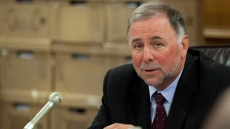OTTAWA - A tricky rule keeps tripping up thousands of Canadians who make withdrawals from their tax-free savings accounts, and replace the money too early.
Some 54,700 taxpayers got warning packages from the Canada Revenue Agency earlier this year about the problem affecting the 2013 taxation year, and were told they face a penalty.
The number has been dropping steadily from a peak of 103,000 in 2010, but still represents a persistent misunderstanding of TFSA rules even as the agency and financial institutions step up education measures.
The regulations say that account holders can put back the amounts they withdraw from a TFSA only in a later calendar year. Doing so in the same calendar year exposes them to a tax hit for overcontributions, even though they're only replacing the withdrawn funds.
By the end of 2013, some 10.7 million Canadians had opened a TFSA, a savings vehicle introduced by the Conservative government in 2009 that allows money to grow inside tax-free with no income-tax hit on withdrawal.
The popular savings tool cost the federal treasury some $410 million in forgone taxes in 2013, or more than a billion dollars over its first five years.
Some taxpayers are apparently slow to absorb the finicky withdrawal rule: this year 11,260 of them got the same warning package from the Canada Revenue Agency last year as well, figures provided by CRA show.
As of the end of last month, the agency had waived penalties for more than 17,000 Canadians who broke the rule in 2012. The average penalty waived was $516, or a total of almost $9 million.
And for the 2013 taxation year, more than 20,000 Canadians have already paid their penalties.
Taxpayers who received a TFSA warning package in the mail this summer were given 60 days to respond. Those who don't respond get a notice of assessment, imposing a penalty.
A spokesman for the agency said the onus is on Canada's banks and other financial institutions to make sure their customers know the rules.
"As with any financial or investment product, financial institutions have a responsibility to inform their clients of the details and restrictions relating to TFSAs," said Philippe Brideau.
"The CRA continues to work very closely with the financial institutions to ensure that CRA information related to TFSA is well understood and known by the Canadian financial sector."
Brideau noted that fewer than half a per cent of TFSA holders ran afoul of the rules in 2013.
The current maximum annual contribution to a tax-free savings account is $5,500, though Prime Minister Stephen Harper has promised to double the maximum once the federal books are balanced, expected next year in advance of the scheduled 2015 federal election.
A special analysis in 2012 by the Finance Department found that the savings vehicle is more popular among higher income and older Canadians.





